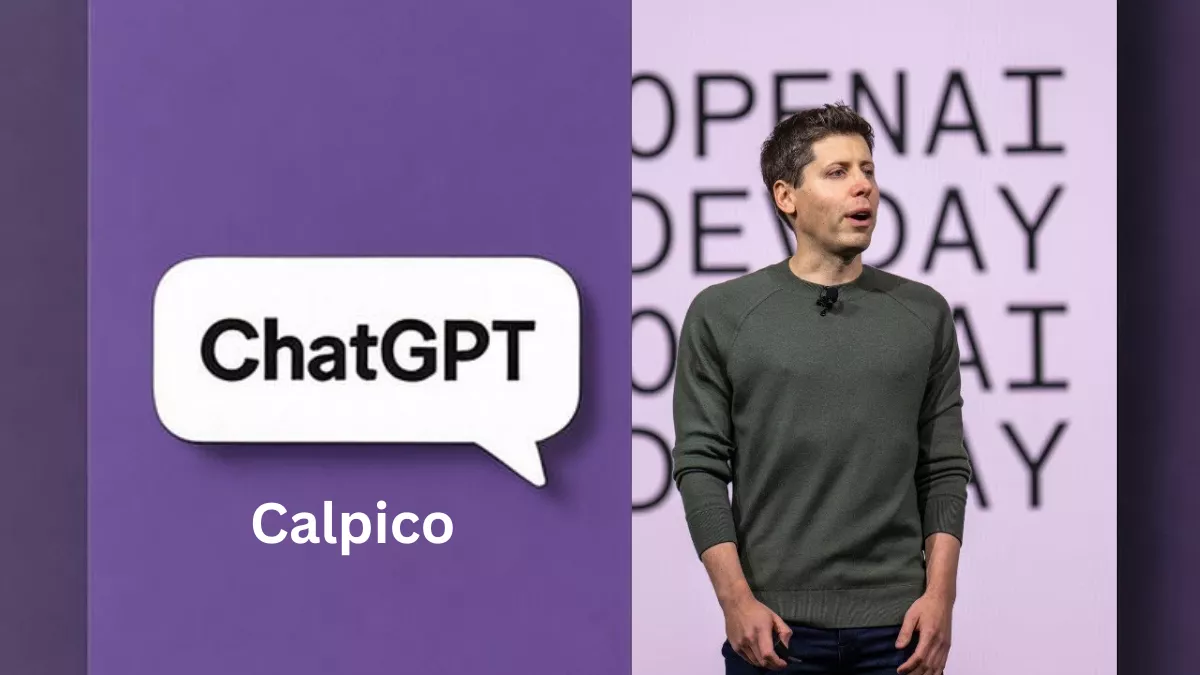OpenAI tests direct messaging feature codenamed Calpico in ChatGPT Android beta, transforming the AI chatbot into a collaborative social platform with group chats and customizable assistants.
Key Highlights:
- OpenAI tests direct messaging in ChatGPT Android beta version 1.2025.273
- Feature codenamed Calpico enables user-to-user chats and group rooms
- Users can brainstorm together, create images, and customize AI assistants
- Privacy concerns remain as encryption details stay unclear
- Move positions ChatGPT as an everything app competing with Meta and X
ChatGPT Testing Revolutionary Direct Messaging System
OpenAI is transforming ChatGPT from a simple AI chatbot into a full-scale social platform. Tech researcher Tibor Blaho discovered direct messaging functionality in the latest Android beta, revealing OpenAI’s ambitious plans to compete with established social networks.
Calpico Feature Brings Collaborative AI Experience
The new feature, internally called Calpico or Calpico Rooms, allows users to send direct messages and create group chats where people collaborate with AI. This marks a significant shift in how users interact with ChatGPT and each other.
Users can now brainstorm ideas, plan projects, search together, and create images as a group. The system includes customizable AI assistants where participants can rename their bots and adjust their personalities to fit different contexts.
Calpico Silent Tool and Assistant Response Rules
Inside the Calpico group chat interface, testers have identified an option known as the Silent Tool, a control that defines when AI assistants respond during a conversation. The Silent Tool helps users manage discussions more effectively by setting rules such as when the AI should stay quiet, reply automatically, or respond only when directly mentioned by name or tag.
Many users noticed system prompts that say “Do not respond to this message.” This message indicates that the assistant is in silent mode and will not generate a reply unless explicitly triggered. It allows human participants to communicate freely without AI interruptions.
The feature supports flexible settings for both personal and collaborative use. In team environments, one assistant can remain passive while another responds to assigned topics. This type of control creates a smoother workflow for brainstorming, task planning, and idea refinement.
ChatGPT Group Chat Behavior and Custom Assistant Control
Calpico Rooms include options for customizing how assistants behave in shared spaces. Each participant can adjust personality traits, tone, and response conditions to create different types of AI collaborators. These assistants can act as moderators, note-takers, or silent observers depending on user preference.
A common rule inside these chats is that the assistant should only reply when someone mentions it directly or requests input. Users can enable or disable auto-response, which determines whether ChatGPT replies instantly to all messages or waits for a mention. This makes Calpico group chats more organized and suitable for multitasking or structured discussions.
OpenAI Platform Strategy Takes Shape
This development follows OpenAI’s recent DevDay event, where the company unveiled plans to run third-party apps directly inside ChatGPT. The platform already integrates services like Spotify, Canva, and Zillow, pushing toward an everything app model similar to China’s WeChat.
The messaging feature includes standard social tools: profile updates, push notifications when someone joins or leaves chats, and blocking capabilities. Users can enable auto-response settings, allowing AI to respond automatically or only when mentioned.
Privacy Questions Surround New Social Features
While OpenAI promises that personal ChatGPT memories won’t be accessible in group chats, encryption details remain unclear. This raises concerns, especially after previous incidents where shared ChatGPT conversations appeared in Google Search results.
The company faces a delicate balance between offering social features and maintaining the trust users place in ChatGPT as a helpful assistant rather than a data-harvesting platform.
Understanding Calpico Rooms and Their Use Cases
Calpico Rooms aim to make collaboration inside ChatGPT more interactive and efficient. Teams can brainstorm product ideas, writers can co-edit drafts with an AI assistant, and friends can design images together using ChatGPT’s integrated creative tools. These features move ChatGPT closer to a social workspace where AI becomes a shared participant rather than a solo assistant.
Early testing indicates that users can set access levels, assign roles, and toggle the silent or active mode per room. This flexibility may allow organizations to use Calpico for moderated group sessions or controlled brainstorming environments.
Calpico Official Sources and Availability
OpenAI has not yet released public documentation for Calpico or its silent tool behavior. The feature remains in limited testing inside the Android beta version 1.2025.273. References to “Calpico Rooms” and “Silent Tool” were first reported by tech researcher Tibor Blaho. Users should expect gradual rollout as OpenAI continues to test the system before full release.
Calpico marks a major shift in ChatGPT’s evolution from a text-based chatbot to a collaborative communication hub. With direct messaging, group chats, and tools like Silent Mode, ChatGPT is positioned to become an all-in-one platform where people and AI work together in real time. As OpenAI expands these capabilities, the company must address transparency and privacy to ensure trust in this new social layer of AI.
Frequently Asked Questions About Calpico in ChatGPT
What is the Calpico Silent Tool in ChatGPT?
The Calpico Silent Tool is a control inside ChatGPT group chats that lets users decide when the AI assistant should respond. It helps organize conversations by allowing the assistant to stay silent until mentioned or reply automatically depending on the selected setting.
What does “Do not respond to this message” mean in Calpico group chats?
This system message appears when the Silent Tool is active. It tells ChatGPT to ignore that specific message and remain silent. It keeps the discussion focused among human participants until someone directly calls on the assistant to join in.
How does the assistant know when to respond in Calpico Rooms?
Assistants inside Calpico Rooms follow response rules that users define. They can reply instantly to all messages, respond only when tagged, or stay completely silent until prompted. This flexibility lets teams control how and when the AI participates in group conversations.
Can users create their own assistants inside Calpico group chats?
Yes. Calpico supports customizable AI assistants with different names, tones, and functions. Users can design assistants for tasks like summarizing discussions, managing notes, or generating images inside shared rooms.
Is Calpico available to all ChatGPT users?
Not yet. Calpico is currently being tested in the Android beta version of ChatGPT. OpenAI has not confirmed the release timeline for all platforms.


